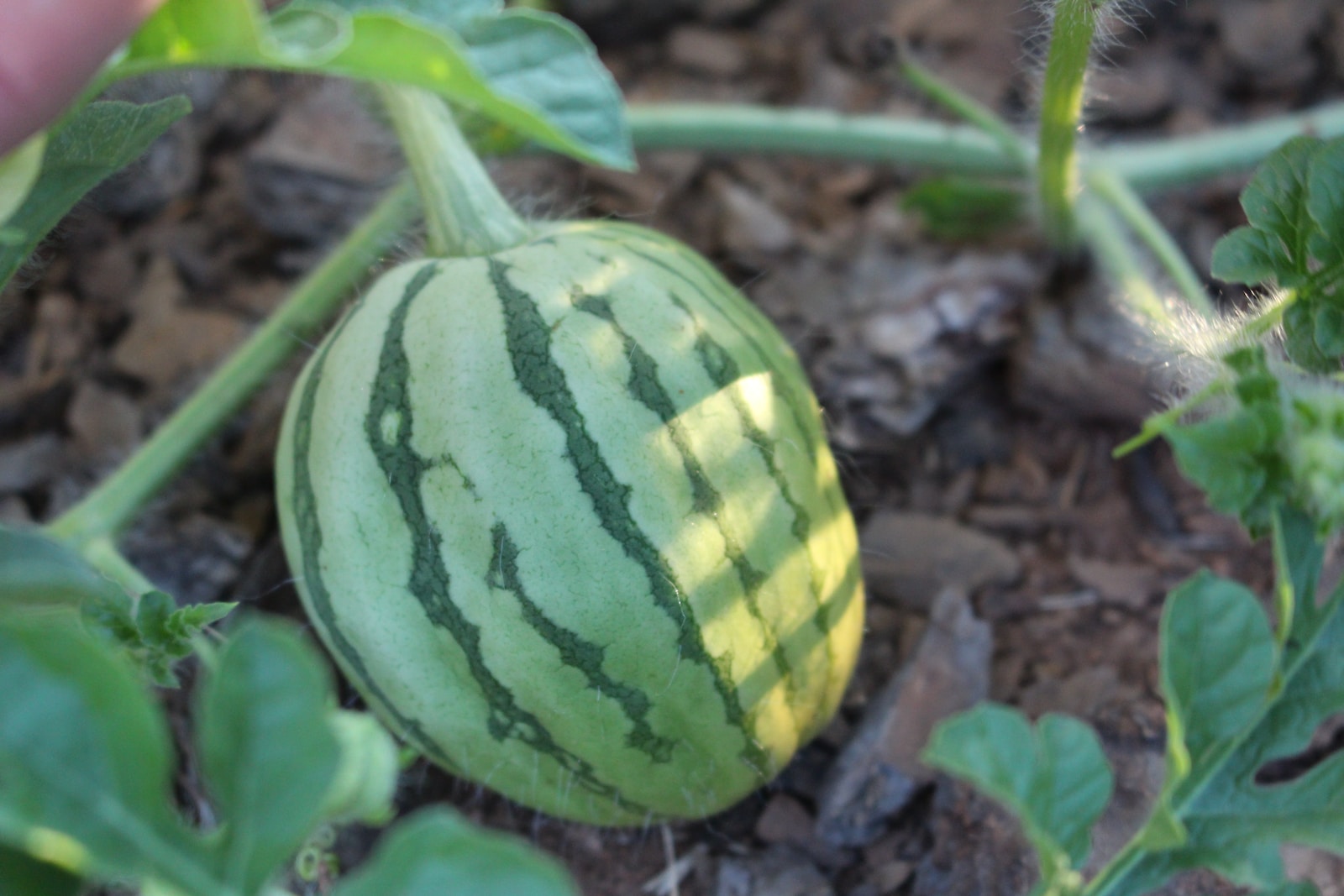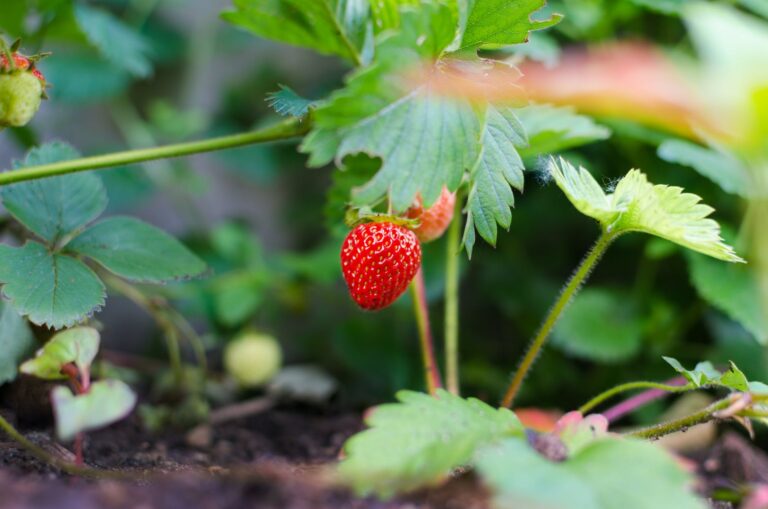Watermelon Farming in Kenya Business Plan
Watermelon stands as one of Kenya’s most sought-after fruits, boasting a robust market demand and promising returns. Nevertheless, delving into watermelon cultivation demands meticulous planning, astute management, and access to premium resources. This underscores the significance of a structured watermelon farming business plan, pivotal for both budding and seasoned farmers.
At its core, a watermelon farming business plan serves as a roadmap detailing the aspirations, methodologies, strategies, and essential resources requisite for initiating and sustaining a prosperous watermelon farming enterprise. This blueprint aids in pinpointing your target demographic, assessing competitors, projecting financial inflows and outflows, and strategizing for potential hurdles.
Beyond operational guidance, a robust watermelon farming business plan becomes a potent tool when seeking external financing. Whether approaching investors, financial institutions, or potential benefactors, a comprehensive plan underscores the project’s feasibility and its potential for lucrative returns.
Importance of a Water Melon Farming Business Plan
Having a well-developed business plan is crucial for the success of your watermelon farming venture. A business plan provides a clear roadmap for your business growth and helps maintain visibility on future cash flows. It’s also essential for securing financing from banks or investors. By having a well-structured plan, you can guide your decision-making and resource allocation, ensuring long-term success and sustainability.
When creating a business plan for your watermelon farm, there are several components that you should include. These include a forecasted balance sheet, projected cash flow statement, initial financing plan, and a written part of the business plan that covers executive summary, company presentation, products and services, market analysis, strategy, operations, and financial plan.
To create an effective business plan, you’ll need to conduct market research for accurate financial projections. This will involve understanding your target customer base, competitors, and pricing strategies. By forecasting revenue based on customer spending habits and preferences, you can develop a sales and marketing plan for customer acquisition and retention. Additionally, you should plan for staffing and equipment needs aligned with growth projections.
In the market analysis section of your business plan, you should focus on demographics and segmentation, target market, competition, and key regulations. The strategy section should elaborate on the competitive edge of your watermelon farm, demonstrate your pricing strategy and profitability, outline your sales and marketing plan, set milestones and objectives for future growth, and address risks and mitigants for potential investors or lenders.
Components of a Water Melon Farming Business Plan
When creating a business plan for your watermelon farm, it’s important to include the necessary components that will provide a comprehensive overview of your venture’s financial projections, market analysis, strategy, operations, and future growth objectives.
The financial projections should include a forecasted balance sheet, projected cash flow statement, and an initial financing plan. These will help you maintain visibility on future cash flows and secure financing from banks or investors.
The market analysis section should cover demographics and segmentation, target market, competition, and key regulations. This will help you understand your target customer base, competitors, and pricing strategies.
The strategy section should elaborate on the competitive edge of your watermelon farm, demonstrate your pricing strategy and profitability, outline your sales and marketing plan, and set milestones and objectives for future growth.
Lastly, the operations section should address staffing and equipment needs aligned with growth projections.
Information Needed for a Water Melon Farming Business Plan
To create a comprehensive business plan for your watermelon farm, you’ll need to gather important information about market research, target customer base, competitors, pricing strategies, revenue projections, sales and marketing plan, staffing and equipment needs, and growth projections.
Conduct market research to understand the demand for watermelons and accurately project your financials. Determine your target customer base, identify your competitors, and develop pricing strategies to remain competitive in the market. Forecast your revenue based on customer spending habits and preferences.
Create a sales and marketing plan to acquire and retain customers. Plan for staffing and equipment needs that align with your growth projections. This will ensure that you have the necessary resources to meet demand.
Water Melon Farming Market Analysis Section
In the market analysis section of your watermelon farming business plan, you’ll delve into important aspects such as demographics and segmentation, target market, competition, and key regulations. This section is crucial for understanding the market dynamics and identifying opportunities and challenges for your watermelon farm.
Demographics and segmentation will help you determine the specific characteristics of your target customers, such as age, location, income level, and preferences. This information will guide your marketing and sales strategies.
Identifying your target market involves narrowing down your potential customers to a specific group that’s most likely to buy your watermelons. Understanding their needs and preferences will enable you to tailor your products and services to meet their demands effectively.
Analyzing the competition is essential to identify your strengths and weaknesses compared to other watermelon farmers in the market. This information will help you differentiate your farm and develop competitive strategies.
Lastly, understanding the key regulations and requirements in the watermelon farming industry will ensure that you comply with all legal and operational obligations. This knowledge will help you avoid potential penalties and disruptions to your business operations.
Water Melon Farming Strategy Section
Now that you have analyzed the market dynamics and identified opportunities and challenges for your watermelon farm, it’s time to formulate a strategic plan that will set your farm apart from the competition and ensure its long-term success.
Your strategy section should elaborate on the competitive edge of your watermelon farm, demonstrate your pricing strategy and profitability, outline your sales and marketing plan, set milestones and objectives for future growth, and address risks and mitigants for potential investors or lenders.
To differentiate your watermelon farm from competitors, consider highlighting factors such as your use of high-quality seeds or seedlings, efficient irrigation systems, and protective measures against pests and diseases.
Additionally, your pricing strategy should take into account market demand and production costs to ensure profitability.
Your sales and marketing plan should focus on acquiring and retaining customers. Identify potential buyers such as local markets, grocery stores, and restaurants, and develop a strategy to reach them effectively. Establishing relationships with buyers and negotiating favorable terms is also crucial for success.
Lastly, setting milestones and objectives will help guide your farm’s growth. These could include increasing production capacity, expanding your customer base, or diversifying your product range.
Planning and Setting up the Water Melon Farm
Start by determining the market demand for watermelons and researching the ideal growing conditions for successful cultivation. Conduct thorough market research to understand the demand for watermelons in your target market. Identify potential buyers such as local markets, grocery stores, and restaurants. This will help you determine the quantity of watermelons you need to produce to meet the market demand.
Simultaneously, research the ideal growing conditions for watermelons. Consider factors such as climate, soil type, and water availability. Watermelons thrive in temperatures between 22-28 degrees Celsius and require well-drained soil with a pH of 6.0-6.8. They also need adequate water for proper growth and fruit formation, so ensure you have a reliable irrigation system in place.
Once you have gathered all the necessary information, calculate the required land area for watermelon cultivation. Develop a detailed business plan that includes financial projections, marketing strategies, and growth plans. Make sure to secure the necessary permits and licenses for operating a farm.
Next, select high-quality watermelon seeds or seedlings and prepare the soil by removing weeds and adding necessary nutrients. Set up an irrigation system to ensure proper watering of the plants and install a trellis or support system for the watermelon vines to grow on. Additionally, implement protective measures against pests and diseases to safeguard your crop.
Determining Market Demand for Water Melon
After conducting market research and understanding the ideal growing conditions for watermelons, the next step is to determine the market demand for watermelon in order to effectively plan your cultivation and sales strategies.
Market demand refers to the quantity of watermelons that consumers are willing and able to purchase at a given price and time. To determine market demand, you’ll need to consider factors such as the size of the target market, consumer preferences, and competition.
Conducting market surveys, analyzing consumer trends, and studying the purchasing power of potential customers will provide valuable insights into the demand for watermelons. Additionally, understanding the seasonality of the market and identifying any fluctuations in demand throughout the year will help you plan your cultivation and harvesting schedules.
Ideal Growing Conditions for Water Melon
To maximize the growth and yield of watermelons, it’s crucial to provide them with the ideal growing conditions. Watermelons thrive in a climate with an optimal temperature range of 22-28 degrees Celsius. They also prefer an altitude of 0-1500 meters above sea level and a rainfall of 400-4000mm per year. When it comes to soil, watermelons prefer well-drained soil with a pH level of 6.0-6.8, slightly acidic.
To ensure proper growth, it’s recommended to prepare the land with a spacing of 100-150cm between rows and 90-100cm between plants. Propagation can be done by sowing watermelon seeds directly in the field, after soaking the seeds in water overnight. Applying fertilizer is essential for proper root development.
Watermelon farming techniques include proper irrigation management, intercultural operations such as weeding, top dressing, pruning, and mulching. It’s important to keep the watermelon plots weed-free to avoid competition for nutrients. Care must be taken not to damage the watermelon roots while removing weeds. Additionally, proper use of manures and fertilizers is crucial for the watermelon crop.
Required Land Area for Water Melon Farming
Watermelon farming requires a specific amount of land area to ensure optimal growth and yield. The required land area for watermelon farming in Kenya depends on various factors such as the variety of watermelon, the spacing between plants, and the farming technique used. Generally, watermelons are grown in rows with a spacing of 100-150cm between rows and 90-100cm between plants. This allows enough space for the plants to spread out and receive adequate sunlight and nutrients.
The land area needed for watermelon farming also depends on the scale of the operation. For small-scale farmers, a few acres of land may be sufficient to meet their needs. However, for larger commercial farms, several hectares of land may be required to achieve higher production levels.
It is important to note that watermelons are vining plants that require ample space to grow and spread. Therefore, it’s essential to plan and allocate the necessary land area to accommodate the growth and development of the watermelon plants. By ensuring the right amount of land area, watermelon farmers can maximize their yield and profitability.
Securing Permits and Licenses Water Melon Farming
Securing permits and licenses for watermelon farming is an essential step in establishing a legal and compliant operation. Before you can start your watermelon farm, you need to ensure that you have obtained all the necessary permits and licenses required by the local authorities. These permits and licenses may include a farming license, land use permit, environmental impact assessment certificate, and water abstraction permit. Each of these permits and licenses serves a specific purpose and is designed to ensure that your farm operates in accordance with the regulations and guidelines set by the government.
To obtain these permits and licenses, you’ll need to submit various documents and fulfill certain requirements. These may include providing details about your farm’s location, size, and proposed activities, as well as demonstrating that you have taken measures to minimize any potential negative impact on the environment. It’s important to note that the specific requirements and processes for obtaining permits and licenses may vary depending on your location and the regulations in place.
Securing permits and licenses for your watermelon farm demonstrates your commitment to operating a legal and responsible business. It not only protects you from potential legal issues but also ensures that you’re following best practices and contributing to sustainable agricultural practices. Therefore, it’s crucial to research and understand the specific requirements in your area and engage with the relevant authorities to obtain the necessary permits and licenses for your watermelon farming operation.
Selecting High-Quality Water Melon Seeds
After successfully securing the necessary permits and licenses for your watermelon farm, the next crucial step is selecting high-quality watermelon seeds. The quality of the seeds you choose will directly impact the yield and quality of your watermelons. When selecting seeds, it’s important to consider factors such as disease resistance, germination rate, and fruit characteristics.
Look for reputable seed suppliers who specialize in watermelon seeds and have a good track record. Check for certification labels on the seed packets to ensure that they’ve been tested and meet quality standards.
Additionally, consider consulting with experienced watermelon farmers or agricultural experts for recommendations on the best seed varieties for your specific region and market demand. Remember that investing in high-quality seeds will set a strong foundation for your watermelon farm and increase your chances of success.
Preparing the Soil
To prepare the soil for your watermelon farm, you need to ensure that it’s free of weeds and enriched with necessary nutrients.
Start by removing any existing weeds from the soil to prevent competition for nutrients and space. This can be done manually or using appropriate weed control methods.
Once the soil is weed-free, it’s essential to enrich it with the necessary nutrients for optimal watermelon growth. Conduct a soil test to determine its nutrient content and pH level. Based on the results, you may need to add organic matter, such as compost or well-rotted manure, to improve soil fertility.
Additionally, you may need to apply appropriate fertilizers to provide essential nutrients like nitrogen, phosphorus, and potassium. Follow the recommended application rates and timings to ensure that the soil is adequately nourished.
Creating an Irrigation System
Creating an efficient irrigation system is crucial for the successful cultivation of watermelons. Watermelon plants require consistent and adequate water supply throughout their growth cycle to produce high-quality and juicy fruits.
To create an effective irrigation system, you need to consider factors such as water source, irrigation method, and scheduling.
Firstly, it’s essential to identify a reliable water source for your watermelon farm. This could be a well, borehole, or nearby water body. Make sure to test the water quality to ensure it’s suitable for irrigation purposes.
Next, choose an appropriate irrigation method that suits your farm’s size, layout, and water availability. Drip irrigation is commonly used for watermelon farming as it delivers water directly to the plant’s root zone, minimizing water wastage and weed growth.
Once you have decided on the irrigation method, develop a proper scheduling system to determine when and how much water to apply. Watermelons require more water during hot and dry periods, especially during flowering and fruiting stages. Monitoring soil moisture levels and adjusting irrigation accordingly will help prevent over or under-watering.
Installing Protective Measures
Now that you have set up a sturdy support system for your watermelon plants, it’s essential to install protective measures to safeguard them from pests and diseases. These measures are crucial for ensuring the health and productivity of your watermelon farm.
One of the first protective measures you should consider is implementing pest control strategies. Common pests that can attack watermelon plants include aphids, spider mites, and cucumber beetles. You can use organic pesticides or insecticidal soaps to control these pests. Additionally, practicing crop rotation and maintaining good hygiene in your farm can help prevent pest infestations.
Another important protective measure is disease prevention. Watermelon plants are susceptible to diseases such as powdery mildew and fusarium wilt. To prevent these diseases, ensure proper air circulation by spacing your plants adequately. You can also apply fungicides as a preventive measure.
Furthermore, consider using physical barriers like nets or row covers to protect your plants from birds and other animals that may feed on the fruits. These barriers can help reduce fruit damage and loss.
Cultivating Watermelons
Once you have prepared the soil and sown the watermelon seeds or transplanted the seedlings, it’s crucial to closely monitor and adjust the irrigation and fertilization schedule as needed.
Watermelons require adequate water for proper growth and fruit formation, so it’s important to ensure they receive enough water throughout their growing period. Regularly check the moisture level of the soil and adjust the irrigation accordingly, making sure not to overwater or underwater the plants.
Additionally, fertilization is essential for providing the necessary nutrients for healthy plant development and high-quality fruit production. Conduct soil tests to determine the nutrient levels and apply fertilizers accordingly. Monitor the plants for any signs of nutrient deficiencies or excesses, and adjust the fertilization schedule as needed.
Pruning the watermelon vines is also important to promote better fruit development and airflow, which helps reduce the risk of diseases. Keep an eye out for pests and diseases, and take appropriate action if any issues arise.
Monitoring Irrigation and Fertilization
To ensure optimal growth and fruit formation in watermelons, closely monitor and adjust the irrigation and fertilization schedule as needed.
Watermelon plants require adequate water for proper development, especially during the fruiting stage. Regularly check the moisture levels in the soil and adjust the irrigation schedule accordingly. Avoid overwatering, as it can lead to root rot and other problems. On the other hand, insufficient watering can result in stunted growth and poor fruit quality.
In addition to irrigation, proper fertilization is essential for watermelon farming. Conduct soil tests to determine the nutrient levels and apply fertilizers accordingly. Nitrogen, phosphorus, and potassium are the key nutrients required by watermelon plants. Adjust the fertilizer application based on the specific needs of your soil and crop. Too much fertilizer can lead to excessive vegetative growth and reduce fruit production, while too little fertilizer can result in nutrient deficiencies and weak plants.
Regularly monitor the plants for any signs of nutrient deficiencies or excesses, such as yellowing leaves or stunted growth. Adjust the fertilization schedule accordingly to ensure balanced nutrition for the watermelon plants.
Pruning the Vines
Pruning the watermelon vines is an essential practice for promoting optimal fruit development and overall plant health. When it comes to watermelon farming, pruning involves removing unnecessary shoots and leaves from the vines. By doing this, you allow more sunlight and air to reach the fruits, which helps them grow bigger and sweeter. Pruning also helps prevent the spread of diseases and pests, as it improves air circulation and reduces humidity around the plants.
To start pruning, identify the main vine and remove any lateral shoots that emerge from the leaf axils. These shoots divert energy away from the main vine and can result in smaller and less flavorful fruits. Additionally, remove any damaged or diseased leaves to prevent the spread of infections. It’s important to note that pruning should be done carefully to avoid damaging the vines or causing unnecessary stress to the plants.
Regular pruning throughout the growing season is recommended. As the vines continue to grow, keep an eye out for new shoots and leaves that may need to be trimmed. By consistently pruning the watermelon vines, you can ensure that the plants focus their energy on producing high-quality fruits.
Monitoring for Pests and Diseases
When monitoring for pests and diseases in your watermelon farm, it’s crucial to regularly inspect your plants for any signs of infestation or infection. Pests such as aphids, spider mites, and cucumber beetles can damage your watermelon plants and hinder their growth. Look for yellowing or wilting leaves, holes in the leaves or fruits, and the presence of insects on the plants.
Diseases like powdery mildew, fusarium wilt, and anthracnose can also affect your crop. Watch out for discoloration or spots on the leaves, stems, or fruits, as well as any signs of wilting or rotting. If you notice any suspicious symptoms, take immediate action to prevent further spread.
Use organic or chemical pesticides to control pests, and apply fungicides to combat diseases. It’s important to follow the recommended dosage and application instructions for these treatments.
Harvesting at the Right Stage
Harvesting watermelons at the optimal stage of ripeness is crucial for ensuring the best flavor and quality of the fruit. It’s important to wait until the watermelons are fully matured before harvesting them. This can be determined by observing a few key signs.
Firstly, the color of the watermelon should be a deep, uniform green. As the fruit ripens, the green color will become duller and the surface will develop a slightly waxy texture.
Secondly, the underside of the watermelon should have a creamy or yellowish appearance. This indicates that the fruit is fully ripe and ready to be harvested.
Lastly, when you tap on the watermelon, it should produce a hollow sound. If the sound is dull or muffled, it means that the fruit isn’t yet ripe and should be left to mature further.
Harvesting watermelons too early can result in a lack of sweetness and a less enjoyable eating experience. On the other hand, waiting too long to harvest can lead to over-ripeness and a loss of flavor. Therefore, it’s important to closely monitor the watermelons and harvest them at the right stage to ensure the best taste and quality.
Marketing and Selling Watermelons
After ensuring that your watermelons are harvested at the optimal stage of ripeness, it’s time to focus on effectively marketing and selling your delicious fruits.
To start, identify potential buyers such as local markets, grocery stores, and restaurants. These establishments are always on the lookout for fresh and tasty watermelons to offer their customers.
Package your watermelons attractively to enhance their market appeal. A visually appealing package can make a significant difference in attracting potential buyers.
Additionally, determine competitive pricing based on market demand and production costs. Conduct market research to understand the current pricing trends and adjust your prices accordingly.
Developing a marketing strategy is crucial for reaching potential customers. Utilize various channels such as social media, online platforms, and local advertisements to create awareness and generate interest in your watermelons.
Establish relationships with buyers and negotiate favorable terms to ensure a steady demand for your produce.
Identifying Potential Buyers
To effectively market and sell your watermelons, it’s important to first identify potential buyers such as local markets, grocery stores, and restaurants.
Local markets are a great place to start as they attract a wide range of customers looking for fresh produce. Approach market managers and inquire about their requirements for watermelon suppliers.
Grocery stores are another potential buyer, as they often source fruits and vegetables from local farmers. Contact the produce managers or buyers at different grocery stores in your area and present them with your watermelon offerings.
Restaurants are also potential buyers, especially those that focus on using fresh, locally sourced ingredients. Reach out to restaurant owners or chefs and discuss the possibility of supplying them with your watermelons.
Additionally, consider targeting juice bars, smoothie shops, and other businesses that use watermelons as ingredients.
Building strong relationships with potential buyers is crucial, so make sure to provide high-quality watermelons, offer competitive pricing, and deliver on time.
Packaging and Pricing
When packaging and pricing your watermelons, it’s important to consider attractive and effective packaging designs that enhance their market appeal. The packaging shouldn’t only protect the watermelons during transportation and storage but also catch the attention of potential buyers.
Opt for packaging materials that are sturdy, environmentally friendly, and visually appealing. Consider using clear plastic or mesh bags that allow customers to see the quality of the watermelons. You can also add labels or stickers with your farm’s logo or branding to create a professional and recognizable image.
Additionally, pricing your watermelons appropriately is crucial for profitability. Take into account factors such as production costs, market demand, competition, and desired profit margins. Conduct market research to understand the prevailing prices in your target market and adjust your pricing strategy accordingly. It’s important to find a balance between competitiveness and profitability.
Developing a Marketing Strategy
Creating a targeted marketing strategy is essential for effectively promoting and selling your watermelons. To develop a successful marketing strategy, you need to identify your target market and understand their preferences and buying habits. Conduct market research to gain insight into the demand for watermelons in your area and the competition you’ll face. This will help you determine the most effective marketing channels to reach your target customers.
Consider packaging your watermelons attractively to enhance their market appeal. Determine competitive pricing based on market demand and production costs. Develop a marketing plan that includes online and offline promotion strategies to reach potential customers. Establish relationships with potential buyers such as local markets, grocery stores, and restaurants, and negotiate favorable terms.
In addition to traditional marketing methods, consider utilizing social media platforms and online marketplaces to increase your reach and visibility. Engage with your customers through social media posts, contests, and promotions. Utilize email marketing to stay connected with your customer base and encourage repeat business.
Regularly evaluate the effectiveness of your marketing strategies and make adjustments as needed. By developing a targeted marketing strategy, you can maximize the visibility and profitability of your watermelon farm.
Maximizing Profit From the Farm
One effective way to maximize profit from your watermelon farm is by implementing efficient farming practices and exploring value-added opportunities.
Efficient farming practices involve minimizing production costs through the efficient use of resources. This can be achieved by optimizing irrigation schedules, using appropriate fertilization techniques, and implementing effective pest and disease control measures.
Additionally, continuously improving farming practices can help increase yield and quality, leading to higher profits.
Exploring value-added opportunities is another way to maximize profit from your watermelon farm. Consider diversifying your product range by growing different watermelon varieties. This can attract more customers and potentially increase sales.
Furthermore, you can explore value-added products such as making watermelon juice or jams. These products have a higher market value compared to selling fresh watermelons alone, allowing you to command higher prices and increase your profit margins.
To ensure effective profit maximization, it’s important to keep accurate records of expenses, sales, and profits. This will help you track your financial performance and make informed decisions for better financial management.
Conclusion
In conclusion, a well-crafted business plan is essential for the success of your watermelon farm in Kenya. It not only acts as a roadmap for growth but also helps secure financing and guides decision-making.
By conducting thorough market research, developing effective marketing strategies, and maximizing profits through packaging and pricing, you can establish and run a profitable watermelon farm.
Whether you’re a beginner or experienced farmer, the insights and tips provided in this article will assist you in achieving success in the world of watermelon farming.







